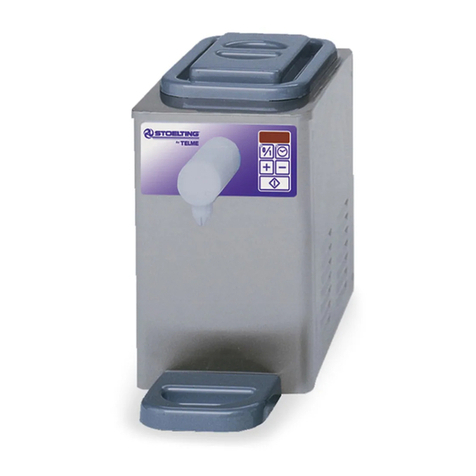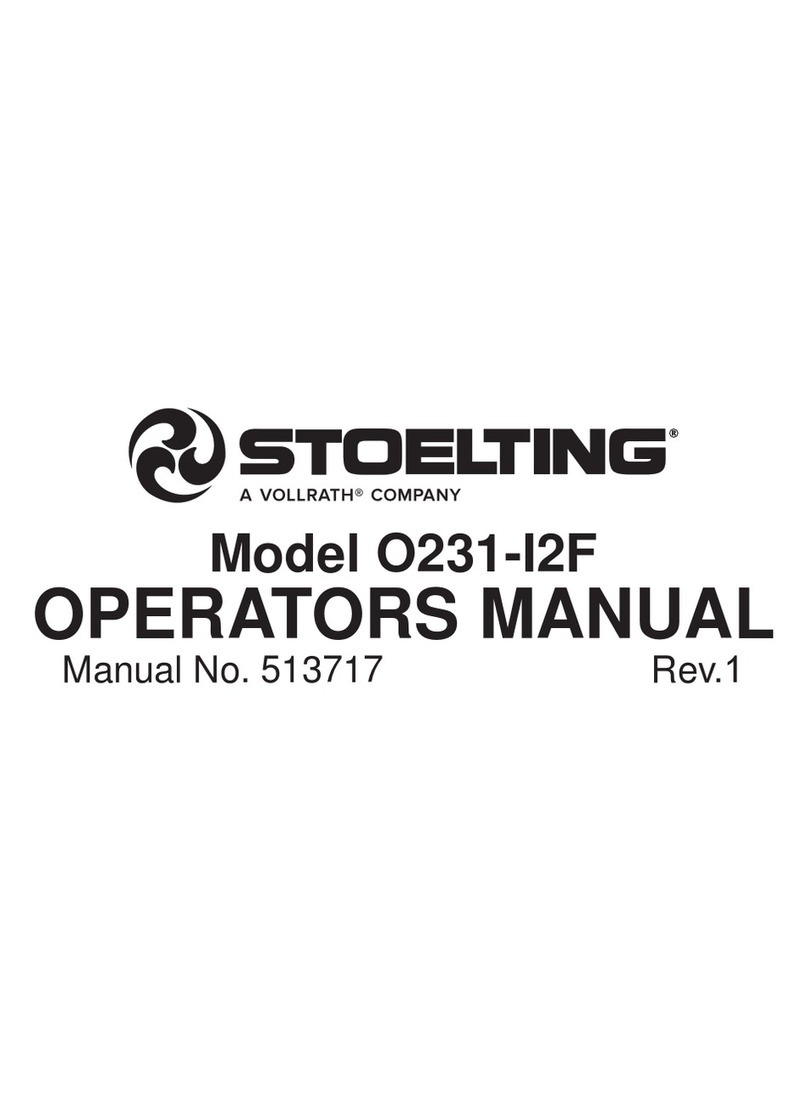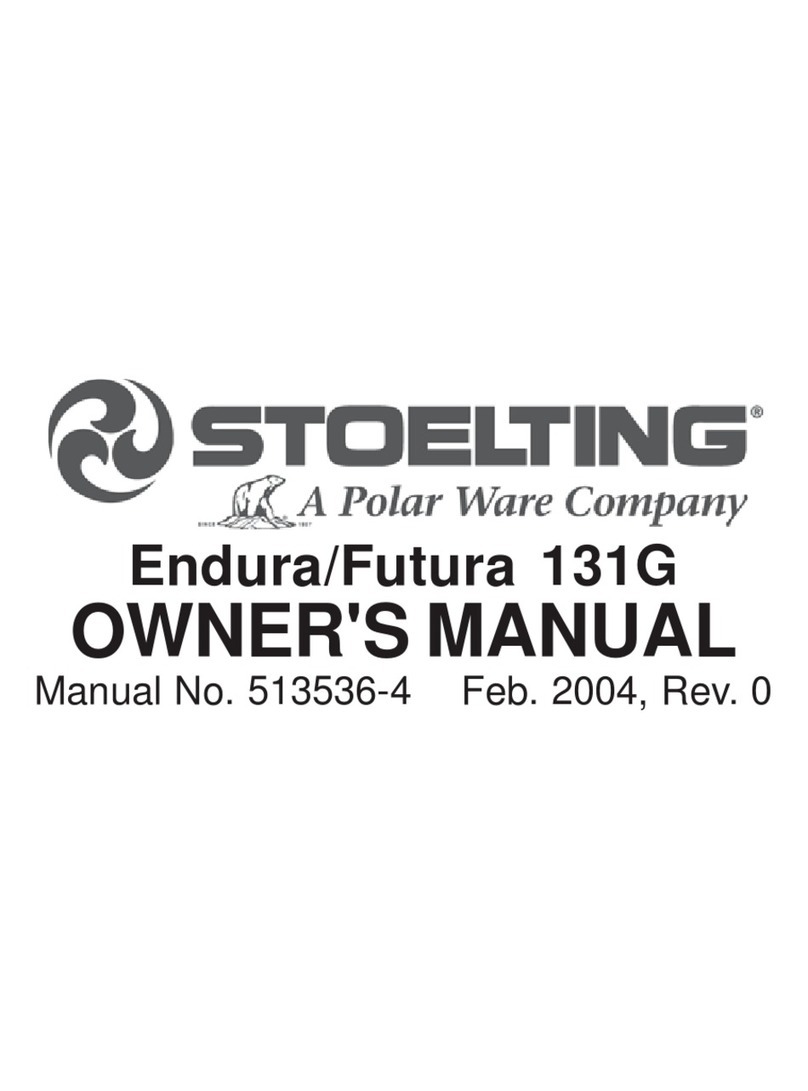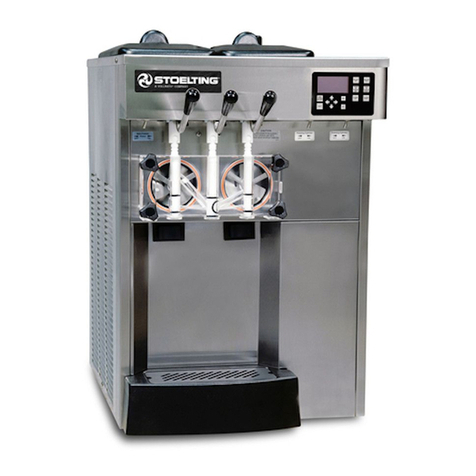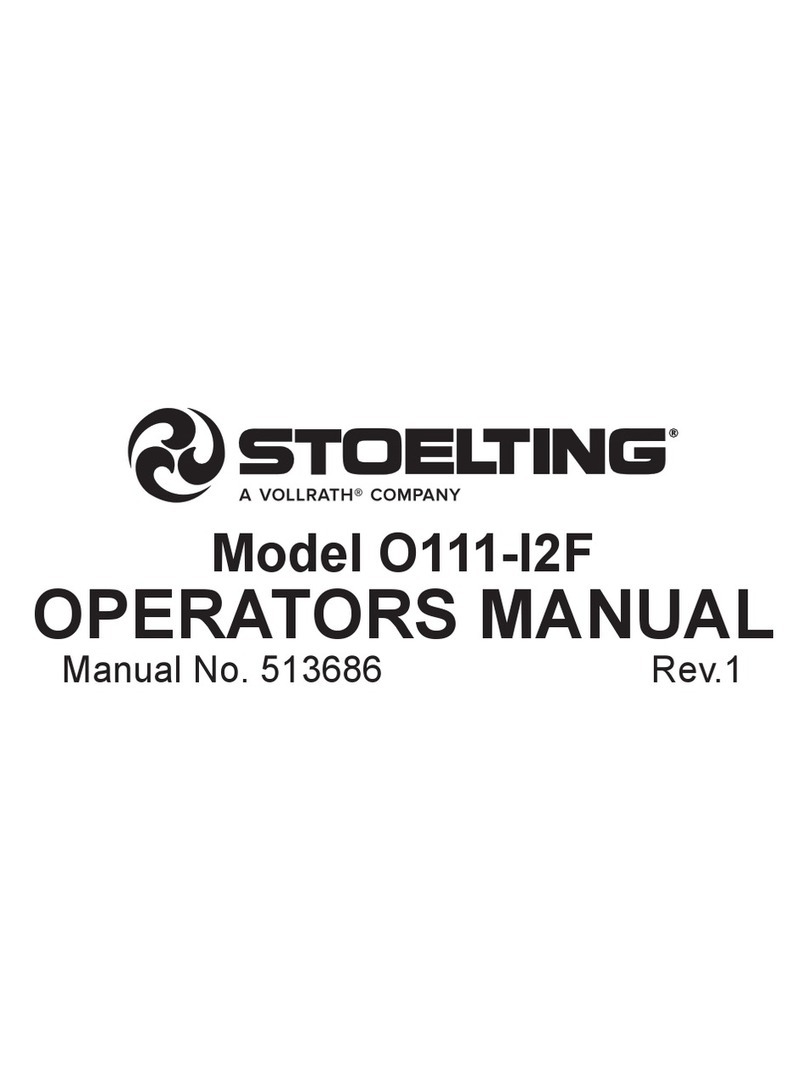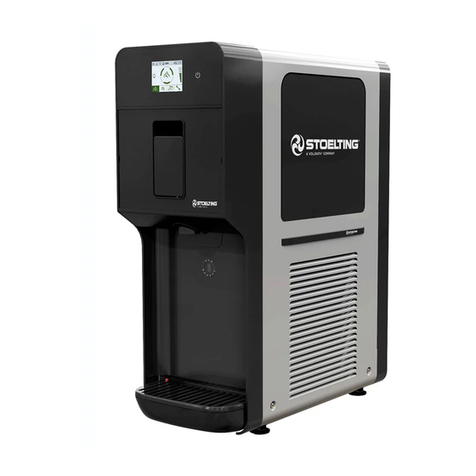
3
SECTION 2
INSTALLATION INSTRUCTIONS
2.1SAFETYPRECAUTIONS
Do not attempt to operate the machine until the safety
precautions and operating instructions in this manual are
read completely and are thoroughly understood.
Takenoticeofallwarninglabelsonthemachine.Thelabels
have been put there to help maintain a safe working
environment.Thelabelshavebeendesignedtowithstand
washing and cleaning. All labels must remain legible for
thelifeofthemachine.Labelsshouldbecheckedperiodi-
callytobesuretheycanberecognizedaswarninglabels.
If danger, warning or caution labels are needed, indicate
the part number, type of label, location of label, and
quantityrequired along with your addressand mail to:
STOELTING
ATTENTION: Customer Service
502 Hwy. 67
Kiel, Wisconsin 53042
2.2 SHIPMENT AND TRANSIT
Themachinehasbeenassembled,operatedandinspected
at the factory. Upon arrival at the final destination, the
entire machine must be checked for any damage which
mayhaveoccurredduringtransit.
With the method of packaging used, the machine should
arriveinexcellentcondition.THECARRIERISRESPON-
SIBLE FOR ALL DAMAGE IN TRANSIT, WHETHER
VISIBLEORCONCEALED.Donotpaythefreightbilluntil
the machine has been checked for damage. Have the
carrier note any visible damage on the freight bill. If
concealeddamageand/orshortageisfound later, advise
the carrier within 10 days and request inspection. The
customermustplaceclaimfordamagesand/orshortages
in shipment with the carrier. Stoelting, Inc. cannot make
any claims against the carrier.
2.3MACHINEINSTALLATION
Installation of the machine involves moving the machine
close to its permanent location, removing all crating,
setting in place, assembling parts, and cleaning.
A. Uncratethemachine.
B. Accuratelevelingisnecessaryforcorrectdrainage
of machine barrel and to insure correct overrun.
Placeabubblelevelontopofthemachineateach
corner to check for level condition. If adjustment
is necessary, level the machine by turning the
bottom part of each leg in or out. Then separate
machinebasegasketandinstallwithseamtothe
back and angle to the top.
C. Correctventilationisrequired.TheCF101requires
a minimum of 6" (15,2 cm) air space at left and
right sides and 10" (25,4) air space above the
machine.
CAUTION
Failuretoprovide adequate ventilationwillvoid war-
ranty.
D. Place the Main Freezer Power Off/On switch in
the OFF position.
E. Connect the power cord to the proper power
supply. The plug is designed for 208-240 volt/20
ampduty.Checkthenameplateonyourmachine
for proper supply. The unit must be connected to
a properly grounded receptacle. The electrical
cordfurnishedaspartofthemachinehasa three
pronggroundingtypeplug.Theuseofanextension
cord is not recommended, if necessary use one
witha size 12gauge orheavier withground wire.
Do not use an adapter to get around grounding
requirement.
WARNING
Do not alter or deform electrical plug in any way.
Altering the plug to fit into an outlet of different con-
figuration may cause fire, risk of electrical shock,
product damage and will void warranty.
Figure 2-2 Space and Ventilation Requirements

